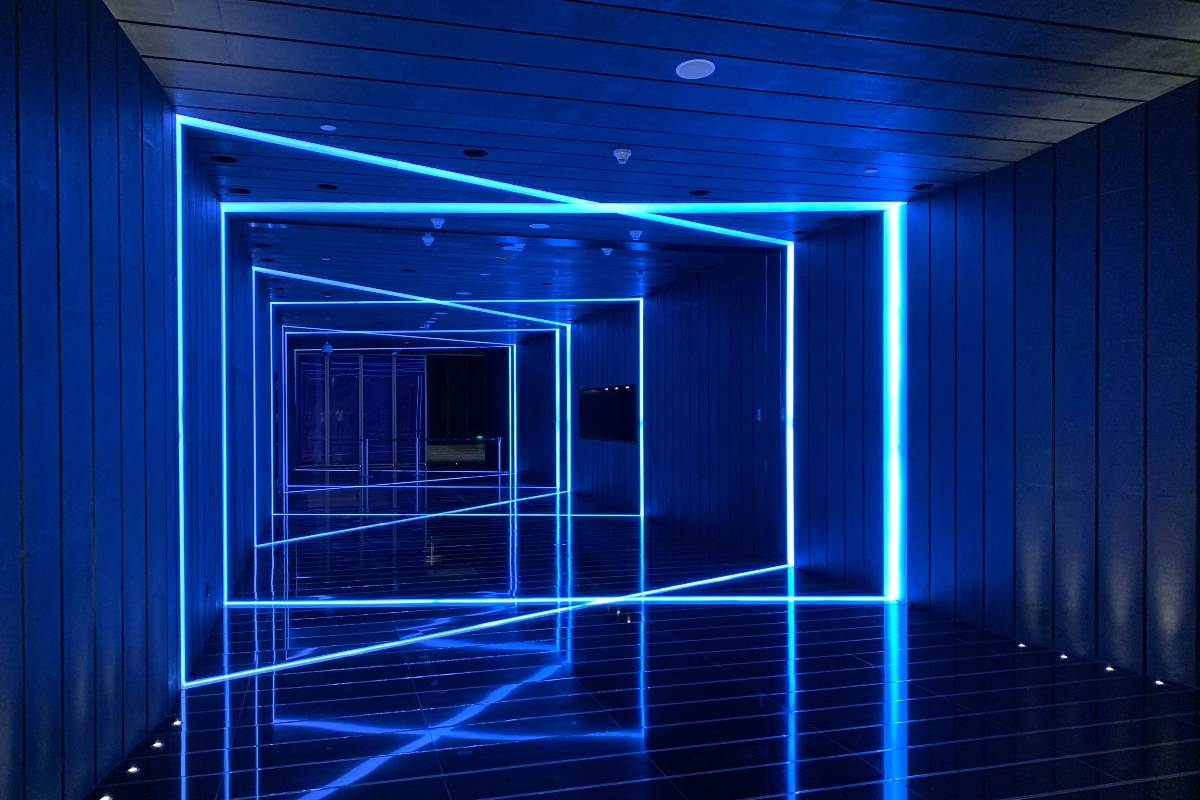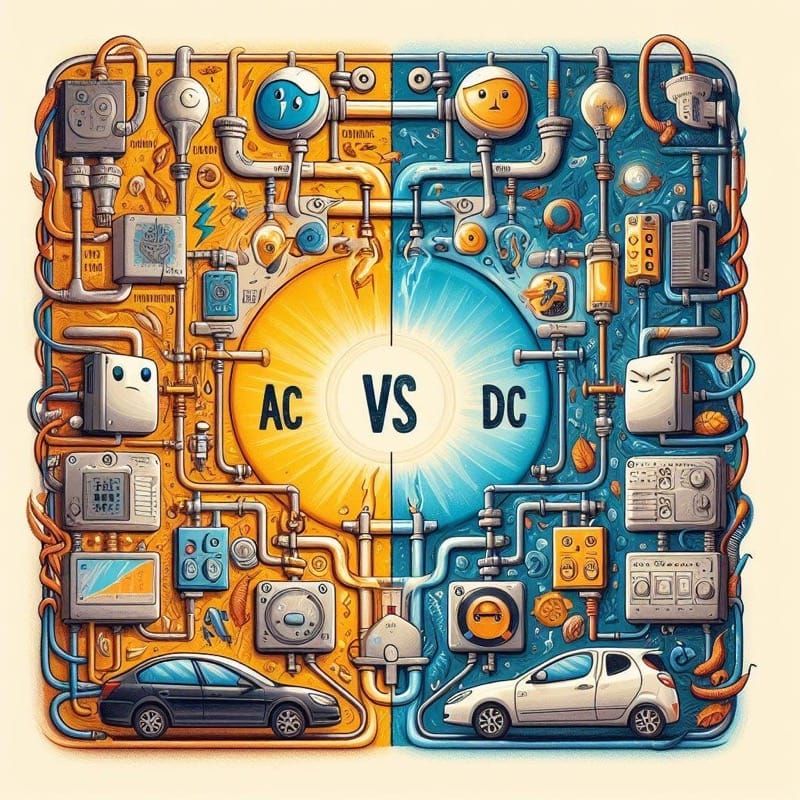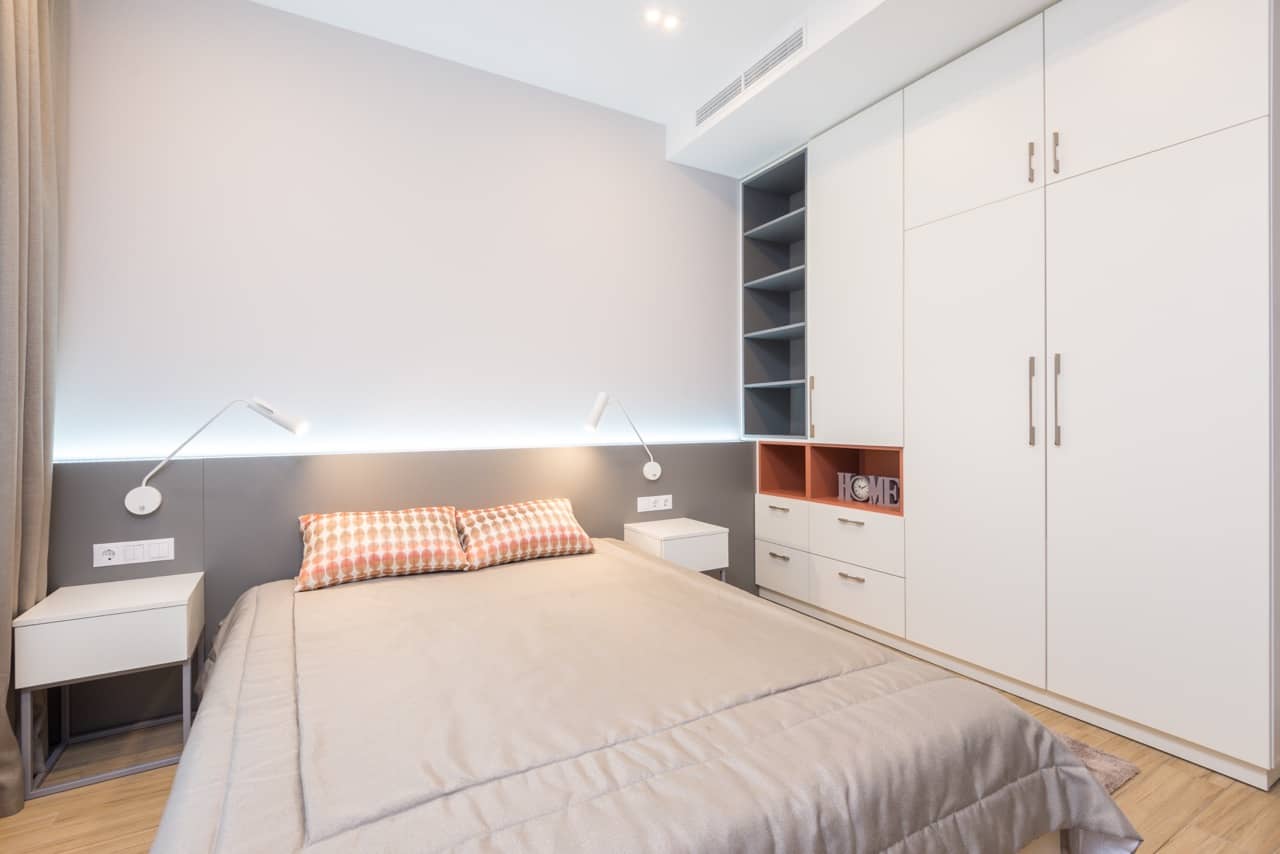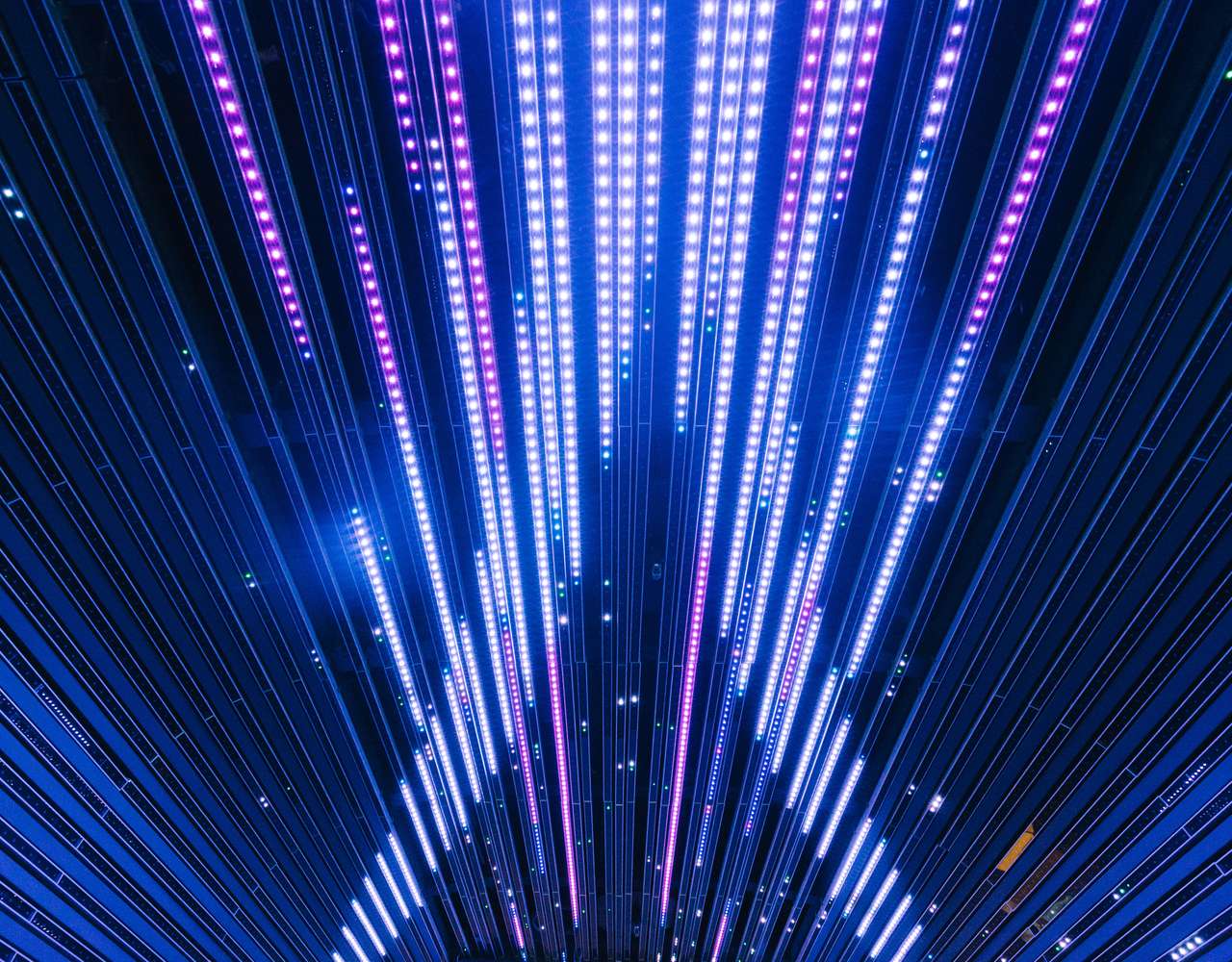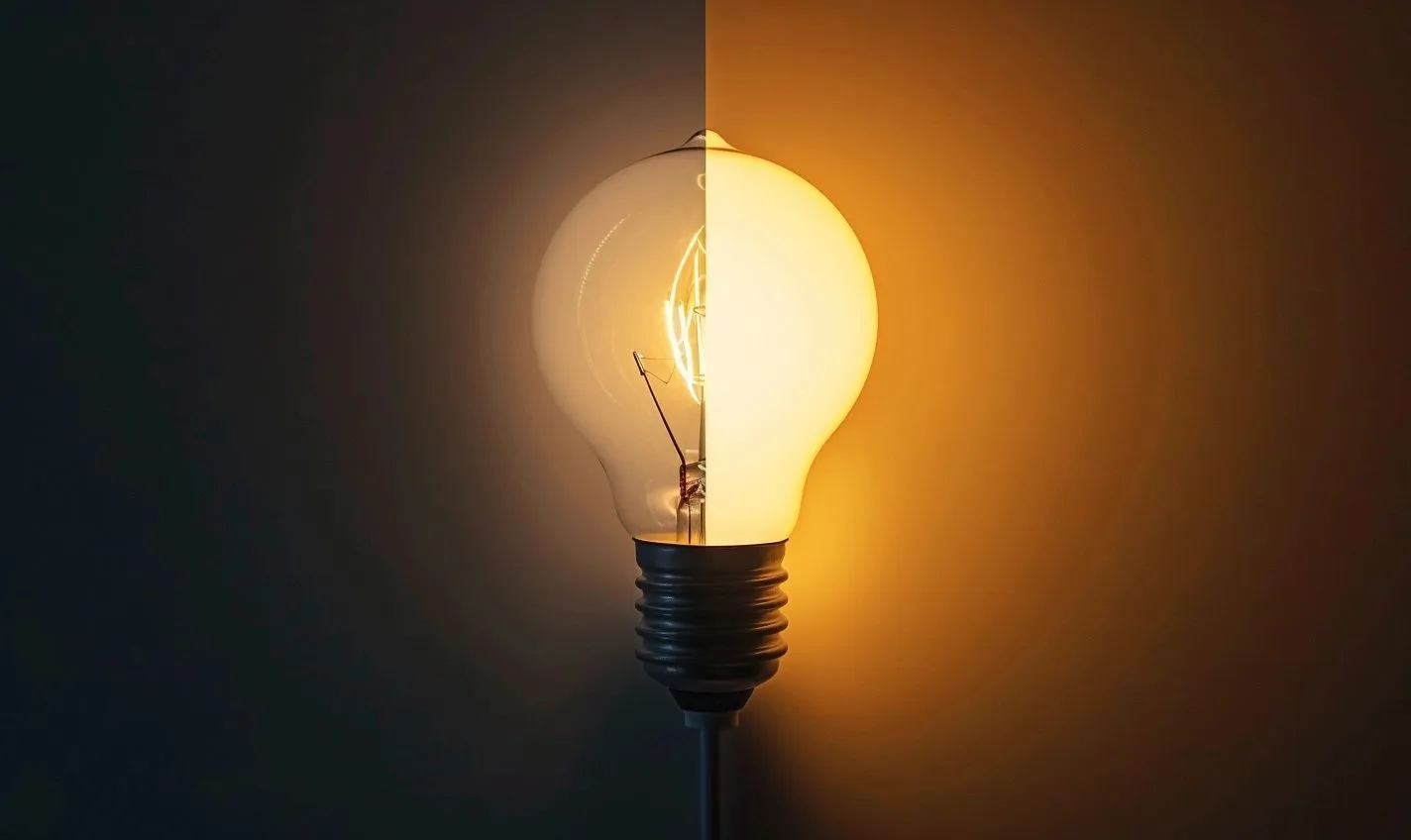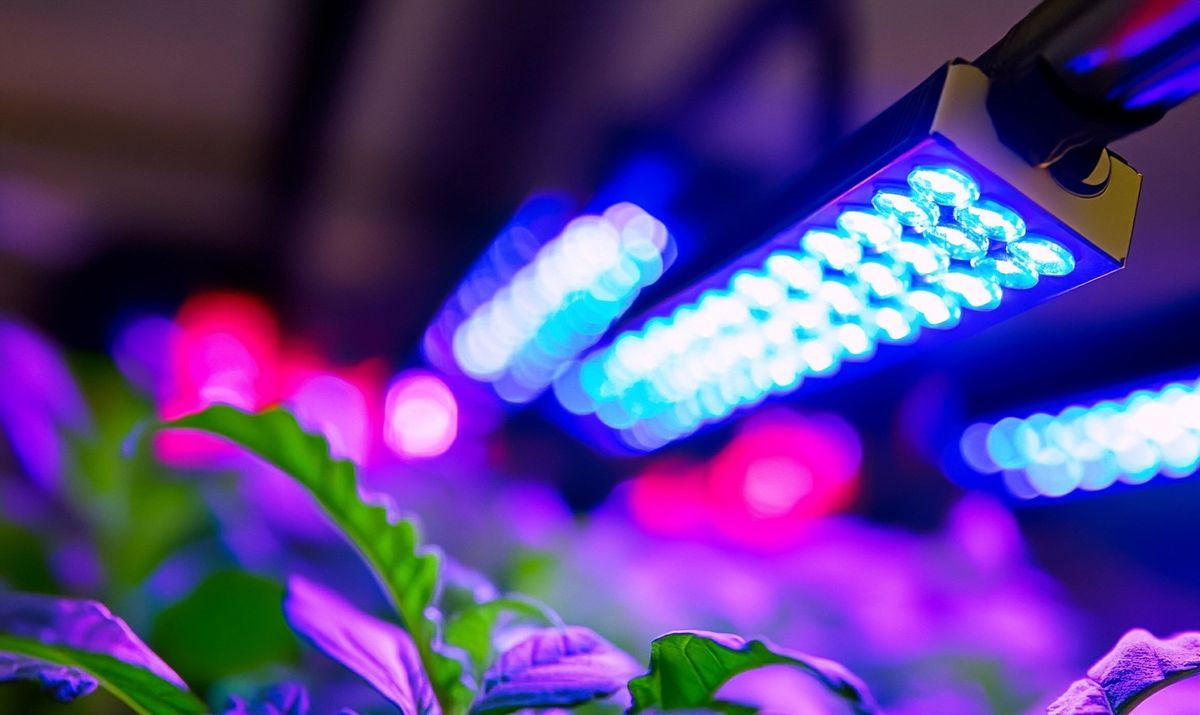LED lighting has rapidly gained popularity in recent years as a highly efficient and eco-friendly alternative to traditional lighting solutions. With their numerous advantages, such as energy efficiency, long lifespan, and versatility, LED lights have become a go-to choice for both residential and commercial lighting needs. However, amidst the rising adoption of LED technology, several myths and misconceptions have emerged, casting doubt on the true benefits of these innovative lighting systems.
Despite the clear advantages of LED lighting, misinformation and misunderstandings persist, leading to confusion among consumers. In this blog post, we aim to address and debunk some of the common myths and misconceptions surrounding LED lights, shedding light on the truth behind these often-misunderstood lighting solutions.
By gaining a clear understanding of the facts and dispelling these myths, readers will be better equipped to make informed decisions when it comes to choosing lighting options for their homes or businesses. Let’s explore some of the most prevalent misconceptions and separate fact from fiction when it comes to LED lighting.
Through the following sections, we will delve into specific myths, exploring topics such as the perceived high cost of LED lights, concerns about their light quality, doubts regarding their dimming capabilities, and beliefs surrounding their impact on eye health. Additionally, we will examine misconceptions about the design options available and concerns related to UV radiation and lifespan.
By the end of this blog post, we hope to provide readers with accurate information and debunk these common myths surrounding LED lighting. Armed with the truth, you will be able to fully appreciate the benefits and advantages of LED lights, making confident decisions when it comes to incorporating them into your lighting setups.
Let’s dive in and separate fact from fiction as we debunk the common myths and misconceptions about LED lighting.
Myth 1: LED Lights are Expensive
Debunking the Myth of Expensive LED Lights
LED lights have long been associated with the misconception that they are expensive upfront. However, this belief fails to take into account the long-term cost savings and energy efficiency that LED lights offer. Let’s delve into the details and debunk this myth once and for all.
The Misconception about Upfront Costs
Contrary to popular belief, the initial cost of LED lights has significantly decreased over the years. While LED lights may have had a higher price point in the past, advancements in technology and increased market competition have led to more affordable options. Many LED lighting products are now available at prices comparable to traditional lighting solutions.
Long-Term Cost Savings and Energy Efficiency
LED lights are renowned for their exceptional energy efficiency, which directly translates into long-term cost savings. When compared to traditional incandescent or fluorescent bulbs, LED lights consume significantly less energy, reducing electricity bills and environmental impact.
Additionally, LED lights have an impressive lifespan. While traditional bulbs may need frequent replacements, LEDs can last up to 25 times longer, greatly reducing maintenance and replacement costs over time. This longevity further contributes to the overall cost-effectiveness of LED lighting.
Examples and Statistics Supporting LED Cost Effectiveness
To illustrate the cost-saving benefits of LED lights, let’s take a look at some examples and statistics:
- Energy Savings: According to the U.S. Department of Energy, LED lights use up to 75% less energy than traditional bulbs. This means that by switching to LED lighting, households and businesses can achieve substantial reductions in energy consumption and lower utility bills.
- Return on Investment (ROI): While the initial investment in LED lights may be slightly higher, the return on investment is impressive. A study by the Consortium for Energy Efficiency found that LED lights pay for themselves in energy savings within 1-2 years of use.
- Maintenance Costs: LED lights require minimal maintenance and have a longer lifespan compared to traditional bulbs. This means fewer replacements, reduced maintenance labor, and lower costs associated with bulb replacements in commercial settings.
- Government Incentives: Many governments and energy companies provide incentives, rebates, or tax credits for adopting energy-efficient lighting solutions such as LED lights. These incentives further contribute to the cost-effectiveness of LED lighting installations.
By embracing LED lighting, individuals and businesses can experience significant cost savings over time, offsetting any perceived upfront expense.
In summary, the myth that LED lights are expensive upfront is misleading. While the initial investment may be slightly higher, the long-term cost savings and energy efficiency of LED lights make them a highly cost-effective choice. With reduced energy consumption, lower maintenance costs, and the availability of government incentives, LED lighting presents a financially savvy and environmentally friendly option.
Remember, when considering the cost of LED lights, it’s essential to look beyond the initial price tag and consider the significant long-term benefits. By making the switch to LED, you not only save money but also contribute to a greener and more sustainable future. So, don’t let the myth of expensive LED lights hold you back from reaping the numerous advantages they offer.
Myth 2: LED Lights Emit a Cold, Harsh Light
Debunking the Myth of Cold and Harsh LED Light
One common misconception about LED lights is that they emit a cold and harsh light that lacks the warmth and coziness of traditional incandescent bulbs. However, this belief fails to consider the versatility and adaptability of LED lighting. Let’s explore the truth behind this myth and discover how LED lights can provide warm, inviting illumination.
Understanding Color Temperature in LED Lights
To understand why LED lights are often perceived as producing cold light, we need to explore the concept of color temperature. Color temperature is measured in Kelvin (K) and refers to the appearance of the light emitted by a particular light source. It is commonly associated with the perceived warmth or coolness of the light.
LED lights come in a wide range of color temperature options, allowing users to customize the lighting ambiance according to their preferences. The most common color temperature options for LED lights are:
- Warm White (2700K-3000K): Warm white light resembles the soft, cozy glow of traditional incandescent bulbs. It creates a welcoming atmosphere, making it ideal for areas where a relaxed and inviting ambiance is desired, such as living rooms, bedrooms, and restaurants.
- Neutral White (3500K-4100K): Neutral white light falls between warm and cool tones. It provides a balanced illumination that is suitable for various settings, including offices, kitchens, and retail spaces.
- Cool White (5000K-6500K): Cool white light has a brighter and crisper appearance. It is often used in spaces that require enhanced visibility and focus, such as garages, workspaces, and task-lighting areas.
Warm White: Creating a Cozy Illumination
Contrary to the myth, LED lights can produce warm white light that mimics the comforting glow of traditional incandescent bulbs. Warm white LED lights have gained popularity for their ability to create a cozy and inviting atmosphere in residential and commercial settings. Here’s why warm white LED lights are a great choice:
- Similar Color Rendering: Warm white LED lights offer high color rendering, ensuring that colors appear natural and vibrant. This makes them suitable for creating a warm and visually appealing environment.
- Energy Efficiency: LED lights, including warm white options, are highly energy-efficient, consuming less electricity while still providing ample illumination. This efficiency contributes to both cost savings and environmental sustainability.
- Dimming Capability: LED lights, including warm white ones, are often compatible with dimmer switches, allowing users to adjust the brightness and create the desired ambiance. Dimming warm white LED lights can further enhance the cozy atmosphere.
Achieving Lighting Ambiance Similar to Incandescent Bulbs
LED lights have evolved significantly over the years, and advancements in technology have allowed for greater control and customization of lighting effects. By selecting the appropriate color temperature and incorporating the following techniques, you can achieve a lighting ambiance similar to that of traditional incandescent bulbs:
- Layered Lighting: Combine different types of LED lights, such as warm white overhead lights, accent lights, and task lights, to create a layered lighting design. This mimics the multi-dimensional illumination of incandescent bulbs.
- Lamp Shades and Diffusers: Use lamp shades or diffusers specifically designed for LED lights to soften the light output and create a warmer glow. This can help reduce the perceived harshness of the light.
- Warm White LED Strips: Utilizing LED strip lights in warm white tones can add a touch of elegance and coziness to any space. These strips can be installed under cabinets, along shelves, or behind furniture to provide gentle and warm accent lighting.
- Decorative LED Bulbs: LED bulbs with vintage filament designs can mimic the nostalgic look of incandescent bulbs while offering the energy efficiency and longevity of LED technology. These bulbs can be used in exposed fixtures to create a warm and inviting visual appeal.
By exploring different color temperature options, utilizing dimming capabilities, and strategically incorporating LED lighting in your space, you can create a warm and cozy ambiance that defies the myth of cold and harsh LED light.
In conclusion, LED lights are far from emitting cold and unflattering light. With a wide range of color temperature options, including warm white variations, LED lights can provide warm and inviting illumination akin to traditional incandescent bulbs. By embracing LED technology, you not only benefit from energy efficiency and longevity but also have the flexibility to customize the lighting atmosphere in your home or business.
Don’t let the misconception of cold LED light deter you from experiencing the warmth and beauty that LED lighting can bring. Embrace the versatility and charm of LED lights to create a cozy and inviting environment that leaves a lasting impression on all who enter.
Myth 3: LED Lights Don’t Dim Well
Debunking the Myth of Poor Dimming Capability in LED Lights
There has been a prevailing belief that LED lights are not compatible with dimming capabilities, leading to the misconception that they don’t dim well. However, advancements in LED technology have revolutionized dimming capabilities, allowing for smooth and efficient control of light intensity. Let’s explore the truth behind this myth and uncover the versatility of dimmable LED lights.
Advancements in LED Technology for Smooth Dimming
In the early stages of LED lighting, dimming was indeed a challenge. However, significant advancements have been made to address this limitation. LED lights now incorporate innovative technology that ensures compatibility with various dimming systems, providing seamless dimming experiences. These advancements include:
- Compatibility with Leading and Trailing Edge Dimmers: LED lights are now designed to work effectively with both leading edge and trailing edge dimmers, expanding compatibility options for different dimming systems.
- Improved Dimming Range: LED lights can achieve a wider dimming range, allowing for more precise control over light levels. This improved dimming capability ensures a smooth transition from full brightness to lower levels without flickering or sudden jumps in intensity.
- Flicker-Free Performance: LED lights now offer flicker-free performance, addressing previous concerns about flickering or uneven dimming. This ensures a comfortable and visually pleasing experience when dimming LED lights.
Examples of Dimmable LED Bulbs and Creating Desired Ambiance
Dimmable LED bulbs are available in various shapes, sizes, and color temperatures, allowing users to create the desired ambiance in their spaces. Here are a few examples:
- Warm Dimming LED Bulbs: These LED bulbs can replicate the warm, cozy glow of incandescent bulbs when dimmed. As the light intensity is lowered, the color temperature gradually shifts from a bright white to a warm, inviting glow, creating a relaxing and intimate atmosphere.
- Tunable White LED Bulbs: These LED bulbs offer the ability to adjust the color temperature, allowing users to switch between warm white and cool white light. This versatility enables customization of the lighting ambiance to suit different moods and activities.
- RGB LED Bulbs: These bulbs provide a range of vibrant colors, allowing users to set the perfect ambiance for parties, and events, or simply create a dynamic and visually captivating space. With the option to adjust brightness levels, RGB LED bulbs offer both versatility and control.
Enhancing Ambiance and Setting the Mood with Dimmable LED Lights
Dimmable LED lights offer a multitude of benefits in terms of ambiance and mood-setting. Here’s how they can transform your space:
- Versatility in Different Settings: Dimmable LED lights are ideal for various settings, such as dining areas, living rooms, or bedrooms. By adjusting the brightness levels, you can create a cozy and intimate setting for relaxation or a vibrant and well-lit environment for entertaining guests.
- Energy Efficiency: Dimming LED lights not only allows you to set the desired ambiance but also helps save energy. By reducing the light output when full brightness is not required, you can further optimize energy consumption and lower utility bills.
- Enhancing Visual Appeal: Dimmable LED lights enable you to highlight specific areas or objects in your space. By dimming the surrounding lights and accentuating certain features, you can create focal points and enhance the visual appeal of your room.
In conclusion, the myth that LED lights don’t dim well is outdated. With advancements in LED technology, dimmable LED lights now offer smooth and efficient dimming capabilities. By utilizing dimmable LED bulbs, you can create the desired ambiance, set the mood, and enjoy the versatility that LED lighting brings to your space. Embrace the possibilities of dimmable LED lights and transform your environment into a personalized oasis of light and atmosphere.
Myth 4: LED Lights Cause Eye Strain and Health Issues
Dispelling Concerns about Eye Strain from LED Lights
There have been concerns that LED lights emit harmful blue light, leading to eye strain and various health issues. However, it’s important to separate fact from fiction. Modern LED lights have undergone significant improvements in terms of blue light emissions, making them safer for eye health. Let’s explore the truth and alleviate any worries associated with LED lights.
Understanding Blue Light Emissions in LED Lights
LED lights do emit a certain amount of blue light, which is a component of the visible light spectrum. Blue light is naturally present in sunlight and plays a role in regulating our sleep-wake cycle. However, excessive exposure to blue light, particularly in the evening or at night, can disrupt our sleep patterns and potentially cause eye strain.
The Safety of Modern LED Lights for Eye Health
It’s important to note that modern LED lights have undergone advancements to address concerns regarding excessive blue light emissions. LED manufacturers now employ various techniques to reduce blue light and prioritize eye safety. These measures include:
- Blue Light Filters: Many LED lights now incorporate built-in blue light filters or diffusers that help reduce the amount of blue light emitted. These filters ensure that the light emitted by LED bulbs is more balanced and less likely to cause eye strain.
- Warm White Options: LED lights with warm white color temperatures emit less blue light compared to cooler white tones. By opting for warm white LED bulbs, you can further minimize blue light exposure without compromising on lighting quality.
- Dimming Capability: As mentioned earlier, dimmable LED lights provide the flexibility to adjust the brightness levels according to personal preferences and needs. By dimming the lights, you can further reduce the overall intensity, including the amount of blue light emitted.
Studies and Research Supporting the Safety of LED Lights
Numerous studies and research have been conducted to evaluate the safety of LED lights and their impact on eye health. Here are some key findings:
- American Medical Association (AMA): The AMA conducted a comprehensive study on LED lights and their potential health effects. Their findings indicated that properly designed LED lights, with appropriate color temperature and spectral distribution, are unlikely to cause significant health concerns.
- Harvard Medical School: A study conducted by Harvard Medical School concluded that while exposure to excessive blue light at night can disrupt sleep patterns, LED lights with warm white color temperatures pose minimal risk and can be used safely.
- American Optometric Association (AOA): The AOA states that the level of blue light emitted by LED lights is much lower than that of natural sunlight and does not pose a significant risk to eye health when used appropriately.
By taking into account the advancements in LED technology, the implementation of blue light filters, and the availability of warm white options, it is evident that LED lights have become safer for eye health.
In conclusion, the myth that LED lights cause eye strain and health issues are not supported by scientific evidence. Modern LED lights have significantly reduced blue light emissions and are designed to prioritize eye safety. With the implementation of blue light filters, warm white options, and dimming capabilities, LED lights offer a balanced and comfortable lighting experience. Enjoy the benefits of LED lighting without worrying about adverse effects on your eyesight or overall health.
Remember, responsible usage and proper lighting practices are essential. It’s recommended to maintain appropriate lighting levels, utilizes dimming features, and avoid excessive screen time before bedtime to promote optimal eye health. Embrace the benefits of LED lights while prioritizing your well-being and creating a bright and comfortable environment for yourself and your loved ones.
Myth 5: LED Lights Have Limited Design Options
Debunking the Myth of Limited Design Options in LED Lights
One common misconception about LED lights is that they have limited design flexibility, which may deter those seeking aesthetically pleasing lighting solutions. However, the truth is that LED lights offer a vast array of design options to suit various preferences and styles. Let’s delve into the world of LED lighting and discover the wide range of products available, from different shapes and sizes to innovative designs that are revolutionizing the lighting industry.
Exploring the Wide Range of LED Lighting Products
LED lighting has come a long way since its inception, and manufacturers have responded to consumer demands by introducing a diverse selection of LED lighting products. Here are some examples of the design options available:
- LED Bulbs: LED bulbs come in a variety of shapes, sizes, and base types, providing options to fit different fixtures and applications. Whether you need a standard A19 bulb, a candle-shaped bulb, or a spotlight, there is an LED bulb to meet your requirements.
- LED Downlights: Downlights are recessed light fixtures that provide focused illumination. LED downlights are available in various trim styles, such as round or square, allowing you to integrate them seamlessly into your ceiling design.
- LED Track Lighting: Track lighting offers flexibility in directing light to specific areas. LED track lighting systems come in different finishes and designs, enabling you to create customized lighting arrangements and highlight specific objects or spaces.
- LED Pendant Lights: Pendant lights are an excellent choice for adding a touch of elegance and style to your living spaces. LED pendant lights come in a wide range of shapes, including geometric, drum, or globe designs, allowing you to complement your decor and set the desired mood.
Innovations in LED Design: LED Strip Lights and Smart LED Bulbs
In addition to the traditional LED lighting options, there have been remarkable innovations in LED design that have expanded the possibilities even further. Here are two notable examples:
- LED Strip Lights: LED strip lights are flexible, adhesive-backed strips that can be easily installed in various locations, providing creative lighting solutions. They come in different lengths, colors, and levels of brightness, allowing you to add accent lighting, create ambiance, or highlight architectural features with ease.
- Smart LED Bulbs: Smart LED bulbs offer an exciting blend of functionality and aesthetics. These bulbs can be controlled wirelessly using smartphone apps or voice assistants, allowing you to adjust brightness, and color temperature, and even create dynamic lighting effects. With smart LED bulbs, you can transform your space and customize your lighting experience effortlessly.
These are just a few examples of the diverse design options available in the realm of LED lighting. Whether you’re looking for a sleek and modern fixture or a vintage-inspired design, LED lights offer a wide range of choices to match your style and preferences.
In conclusion, the myth that LED lights have limited design options is far from the truth. LED lighting has evolved significantly, offering a plethora of products that cater to various design aesthetics and lighting needs. From traditional LED bulbs to innovative designs like LED strip lights and smart LED bulbs, there is an abundance of choices available. Embrace the versatility and flexibility of LED lighting to illuminate your space with style and functionality.
Myth 6: LED Lights Emit UV Radiation
Debunking the Myth of UV Radiation from LED Lights
There is a common misconception that LED lights emit harmful ultraviolet (UV) radiation, posing a risk to human health and causing damage to objects or materials exposed to the light. However, it’s important to separate fact from fiction when it comes to the UV emission of LED lights. In reality, LED lights produce minimal UV radiation compared to traditional lighting sources. Let’s explore the truth behind this myth and shed light on the actual UV emissions of LED lights.
Understanding UV Radiation in Lighting Sources
UV radiation is a part of the electromagnetic spectrum and is categorized into three types: UVA, UVB, and UVC. Prolonged exposure to UV radiation, especially UVB and UVC, can have harmful effects on human skin and eyes, as well as cause fading or degradation of certain materials.
Traditional lighting sources, such as incandescent bulbs and fluorescent tubes, do emit a significant amount of UV radiation. However, advancements in LED technology have led to significant reductions in UV emissions.
The Low UV Emission of LED Lights
LED lights are designed to emit minimal UV radiation, making them safer for both human health and the preservation of sensitive materials. Here are a few reasons why LED lights have low UV emissions:
- Wavelength Selection: LED manufacturers carefully select and optimize the wavelengths emitted by their LED chips. By focusing on specific wavelengths within the visible light spectrum, they can minimize the production of UV radiation.
- Phosphor Coating: Many LED bulbs incorporate a phosphor coating on the LED chip, which helps convert blue light into other colors. This process further filters out UV radiation, ensuring that the light emitted is primarily within the visible spectrum.
- UV Filtering: LED light fixtures often include built-in UV filters to block any residual UV radiation that may be present. These filters add an extra layer of protection and ensure that the light emitted is safe for human exposure and materials.
Applications of LED Lights in UV-Sensitive Environments
LED lights’ low UV emission levels make them ideal for applications where UV-sensitive materials or objects are present. Here are some examples:
- Museums and Art Galleries: LED lights are widely used in museums and art galleries to illuminate delicate artworks, historical artifacts, and sensitive displays. Their minimal UV emissions help prevent fading, discoloration, or damage to these valuable pieces.
- Retail Displays: LED lights are commonly used in retail environments to highlight products and create attractive displays. By using LED lighting with low UV emissions, retailers can showcase merchandise without the risk of UV damage, ensuring that the products retain their quality and appearance over time.
- Medical Facilities: LED lights are utilized in various medical settings, including hospitals and clinics. The low UV emissions of LED lights are particularly beneficial in sensitive areas, such as operating rooms or dermatology clinics, where UV exposure should be minimized for patient safety and equipment integrity.
In conclusion, the myth that LED lights emit harmful UV radiation is unfounded. LED lights have significantly reduced UV emissions compared to traditional lighting sources. With careful wavelength selection, phosphor coatings, and UV filtering, LED lights prioritize human health and the preservation of UV-sensitive materials. LED lights are widely used in museums, retail displays, and medical facilities, where low UV emissions are essential. Enjoy the benefits of LED lighting without worrying about harmful UV radiation, and embrace the energy-efficient and environmentally-friendly nature of LEDs. Illuminate your spaces with confidence, knowing that your health and the materials around you are protected.
Myth 7: LED Lights Have Limited Lifespan
Debunking the Myth of Limited Lifespan in LED Lights
One of the misconceptions surrounding LED lights is that they have a short lifespan compared to traditional bulbs. However, this belief couldn’t be further from the truth. LED lights have a significantly longer lifespan, making them a durable and cost-effective lighting option. Let’s delve into the details and debunk the myth of limited lifespan in LED lights.
The Extended Lifespan of LED Lights
LED lights are renowned for their exceptional longevity. Unlike traditional incandescent bulbs or fluorescent tubes, which have relatively short lifespans, LED lights can last for an impressively long time. Here are the key factors contributing to the extended lifespan of LED lights:
- Solid-State Lighting: LED lights are based on solid-state lighting technology, which involves the use of semiconductors to generate light. This technology is inherently more durable and efficient than the filament or gas-filled tubes found in traditional bulbs, allowing LED lights to withstand years of use.
- Efficient Heat Management: LED lights are designed with effective heat management systems to dissipate heat and prevent overheating. Heat is one of the main factors that can shorten the lifespan of lighting sources. By efficiently managing heat, LED lights can operate at lower temperatures, prolonging their lifespan.
- Reduced Wear and Tear: LED lights do not contain fragile filaments or other components that can easily break or wear out. This lack of delicate parts contributes to their durability and enables them to withstand vibrations, shocks, and frequent switching without compromising their performance.
The combination of solid-state lighting technology, efficient heat management, and reduced wear and tear makes LED lights incredibly resilient and extends their operational lifespan.
Long-Term Cost Savings with LED Lights
The extended lifespan of LED lights brings significant long-term cost savings to users. While LED lights may have a higher upfront cost compared to traditional bulbs, their longevity more than compensates for the initial investment. Here’s how LED lights translate into cost savings:
- Reduced Replacement Frequency: With an average lifespan of 25,000 to 50,000 hours or more, LED lights last significantly longer than incandescent or fluorescent bulbs. This means fewer replacements, resulting in lower maintenance and replacement costs over time.
- Energy Efficiency: LED lights are highly energy-efficient, consuming significantly less electricity than traditional bulbs to produce the same amount of light. This energy efficiency not only reduces electricity bills but also contributes to environmental sustainability by lowering carbon emissions.
- Lowered Cooling Costs: LED lights generate less heat compared to traditional bulbs, reducing the strain on cooling systems in commercial or residential settings. This can result in additional energy savings and reduced cooling costs, especially in hot climates.
By considering the extended lifespan and the resulting cost savings, it becomes clear that LED lights are a financially wise investment in the long run. While the initial price may be higher, the durability and energy efficiency of LED lights more than compensate for the upfront cost.
In conclusion, the myth that LED lights have a limited lifespan is inaccurate. LED lights have a significantly longer lifespan compared to traditional bulbs, thanks to solid-state lighting technology, efficient heat management, and reduced wear and tear. The extended lifespan of LED lights brings considerable long-term cost savings through reduced replacement frequency, energy efficiency, and lowered cooling costs. Embrace LED lighting as a durable and cost-effective lighting solution that not only enhances your spaces but also provides significant financial advantages. Make the switch to LED lights and enjoy the benefits of long-lasting, energy-efficient illumination for years to come.
Conclusion
Embracing the Truth about LED Lighting
In conclusion, it is essential to separate fact from fiction when it comes to LED lighting. By debunking common myths and misconceptions, we can embrace the truth about this revolutionary lighting technology. Let’s recap the key points discussed and emphasize the numerous benefits of LED lights that make them an excellent choice for both residential and commercial lighting needs.
The Benefits of LED Lights
LED lights offer a range of advantages that set them apart from traditional lighting sources. Here are the main benefits to consider:
- Energy Efficiency: LED lights are highly energy-efficient, consuming less electricity to produce the same amount of light as traditional bulbs. This energy efficiency not only saves money but also reduces carbon emissions, contributing to a greener and more sustainable future.
- Cost Savings: Despite their higher initial cost, LED lights deliver significant long-term cost savings. Their extended lifespan means fewer replacements, resulting in lower maintenance and replacement expenses. Additionally, the reduced energy consumption translates into lower electricity bills, providing additional financial benefits.
- Design Versatility: LED lights come in a wide range of shapes, sizes, and styles, offering unparalleled design versatility. Whether you’re looking for LED strip lights, smart LED bulbs, or innovative designs, there is an LED lighting product to suit every space and aesthetic preference.
- Superior Lighting Quality: LED lights provide high-quality illumination with excellent color rendering capabilities. They offer a range of color temperatures, including warm white options that create a cozy and inviting ambiance similar to traditional incandescent bulbs. LED lights can enhance the visual appeal of any environment.
Dispelling Myths, Embracing Reality
It is crucial to dispel the myths and misconceptions surrounding LED lighting to make informed decisions. By addressing these misconceptions, we can embrace the reality of LED lights and enjoy their numerous benefits. Remember:
- LED Lights are not expensive but rather offer long-term cost savings through energy efficiency and reduced maintenance.
- LED Lights do not emit a cold, harsh light; they come in various color temperature options, including warm white, for a cozy and pleasant illumination.
- LED Lights are dimmable, thanks to advancements in LED technology, allowing for the desired ambiance in any space.
- LED Lights do not cause eye strain or health issues; modern LED lights have reduced blue light emissions, ensuring safety for eyes and overall well-being.
- LED Lights offer a wide range of design options, from different shapes to innovative designs like LED strip lights and smart LED bulbs.
- LED Lights emit minimal UV radiation, making them safe for human health and suitable for use in UV-sensitive environments.
- LED Lights have a significantly longer lifespan compared to traditional bulbs, resulting in long-term cost savings and reduced environmental impact.
By embracing LED lighting based on accurate information and dispelling misconceptions, we can take advantage of their energy efficiency, cost savings, design versatility, and superior lighting quality. Let’s make the switch to LED lights and illuminate our lives with confidence, knowing that we are benefiting from a modern, sustainable, and reliable lighting solution.
Together, let’s light up the world with the truth about LED lighting, creating bright and vibrant spaces while contributing to a greener future.

